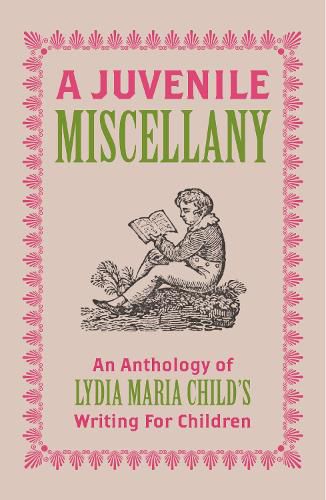Readings Newsletter
Become a Readings Member to make your shopping experience even easier.
Sign in or sign up for free!
You’re not far away from qualifying for FREE standard shipping within Australia
You’ve qualified for FREE standard shipping within Australia
The cart is loading…






This title is printed to order. This book may have been self-published. If so, we cannot guarantee the quality of the content. In the main most books will have gone through the editing process however some may not. We therefore suggest that you be aware of this before ordering this book. If in doubt check either the author or publisher’s details as we are unable to accept any returns unless they are faulty. Please contact us if you have any questions.
Edited with an introduction by Hilary Emmett & Thomas Ruys Smith in collaboration with students from the Department of American Studies at UEA.
Author and activist Lydia Maria Child was a foundational figure in the development of American literature in the early nineteenth century. After her debut novel Hobomok (1824) challenged readers with its representation of interracial marriage, she continued to blaze literary trails for the rest of her life, developing a loyal readership as she confronted the most pressing issues in American life. She wrote novels, poems and short stories, composed housekeeping and parenting manuals, edited abolitionist newspapers and narratives-most notably Harriet Jacobs' Incidents in the Life of a Slave Girl (1861). Less well-known is that she almost single-handedly invented a new American literature for children. For decades, and particularly during her time at the helm of groundbreaking children's magazine The Juvenile Miscellany (1826-1834), Child was a constant companion for young readers across the world.
For the first time, this anthology brings together a career-spanning collection of Child's writing for children which demonstrates the extraordinary richness and range of her vital work in this field. As she shaped the idea of what children's literature could be and do, Child trusted her young readers to understand difficult questions of social and racial justice, explorations of natural and national history, sentimental domestic sketches, and much more besides. Contemporary readers can now rediscover the delight that the arrival of a new issue of The Juvenile Miscellany brought to the world while grappling critically with the ongoing resonance of these questions in the twenty-first century.
$9.00 standard shipping within Australia
FREE standard shipping within Australia for orders over $100.00
Express & International shipping calculated at checkout
This title is printed to order. This book may have been self-published. If so, we cannot guarantee the quality of the content. In the main most books will have gone through the editing process however some may not. We therefore suggest that you be aware of this before ordering this book. If in doubt check either the author or publisher’s details as we are unable to accept any returns unless they are faulty. Please contact us if you have any questions.
Edited with an introduction by Hilary Emmett & Thomas Ruys Smith in collaboration with students from the Department of American Studies at UEA.
Author and activist Lydia Maria Child was a foundational figure in the development of American literature in the early nineteenth century. After her debut novel Hobomok (1824) challenged readers with its representation of interracial marriage, she continued to blaze literary trails for the rest of her life, developing a loyal readership as she confronted the most pressing issues in American life. She wrote novels, poems and short stories, composed housekeeping and parenting manuals, edited abolitionist newspapers and narratives-most notably Harriet Jacobs' Incidents in the Life of a Slave Girl (1861). Less well-known is that she almost single-handedly invented a new American literature for children. For decades, and particularly during her time at the helm of groundbreaking children's magazine The Juvenile Miscellany (1826-1834), Child was a constant companion for young readers across the world.
For the first time, this anthology brings together a career-spanning collection of Child's writing for children which demonstrates the extraordinary richness and range of her vital work in this field. As she shaped the idea of what children's literature could be and do, Child trusted her young readers to understand difficult questions of social and racial justice, explorations of natural and national history, sentimental domestic sketches, and much more besides. Contemporary readers can now rediscover the delight that the arrival of a new issue of The Juvenile Miscellany brought to the world while grappling critically with the ongoing resonance of these questions in the twenty-first century.